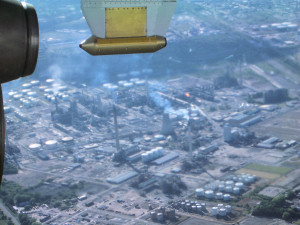Black Carbon Aerosol

Black carbon (BC) aerosol, often called soot, is the dominant form of light absorbing particulate matter in the atmosphere. BC is emitted by incomplete combustion processes, both human (e.g., diesel engines) and natural (e.g., wildfire). Its ability to absorb visible and infrared radiation means BC can heat the atmosphere and darken surfaces, specifically snow and ice. These effects have important consequences on earth’s climate and climate change. BC may also have adverse impacts on human health. Unlike long-lived greenhouse gases such as carbon dioxide, BC is removed from the atmosphere in 1-2 weeks, so its impacts tend to be more regional rather than global. It plays a particularly important role near emission sources, such as those found in western Europe, east Asia, and sub-Saharan Africa. Its relatively short lifetime has made BC reductions a potentially rapid, but short-term, climate change mitigation approach.

The University of Manchester is involved in a number of activities seeking to improve our understanding of the distribution of BC in the atmosphere and its effects on climate. Our work ranges from smaller-scale studies focused on specific types of BC found in the atmosphere, such as wood smoke, to large, continental-scale aircraft measurements that examine fresh and atmospherically aged BC emitted by a range of sources. Our measurements provide information on the spatial and vertical distribution of BC in the atmosphere, the relative strength of different emission sources, and the chemical and physical processes that govern its transformation in the atmosphere. We use optical instruments, including a photoacoustic spectrometer, a multi-angle absorption photometer and the widely-used particle soot absorption photometer to measure the light absorbed by BC-containing aerosol, which is the climatically-relevant BC property. We link the optical measurements to measurements of BC physical and chemical properties made using the single particle soot photometer and recently developed soot particle aerosol mass spectrometer to understand the intrinsic BC properties that govern its ability to absorb light.
Recent studies include the ADIENT and EUCAARI-LONGREX campaigns, which examined BC’s role on aerosol optical properties in the UK and northern Europe, the APPRAISE-Clouds project which examined BC in a relatively rural setting in the UK, and the FLAME 3 and SLO projects, which focused on BC from biomass burning emissions. More information on specific projects can be found on our project pages.